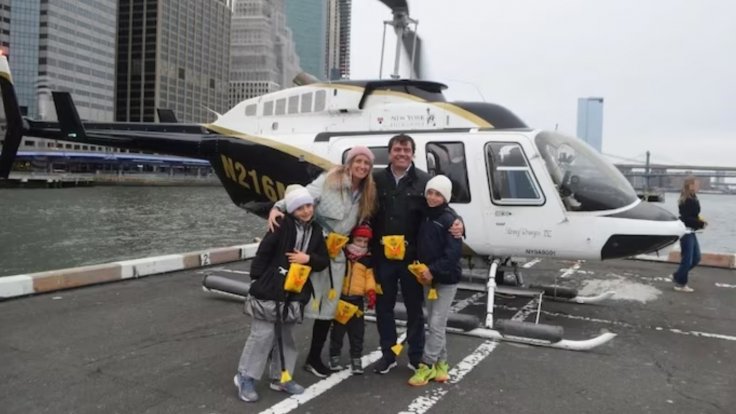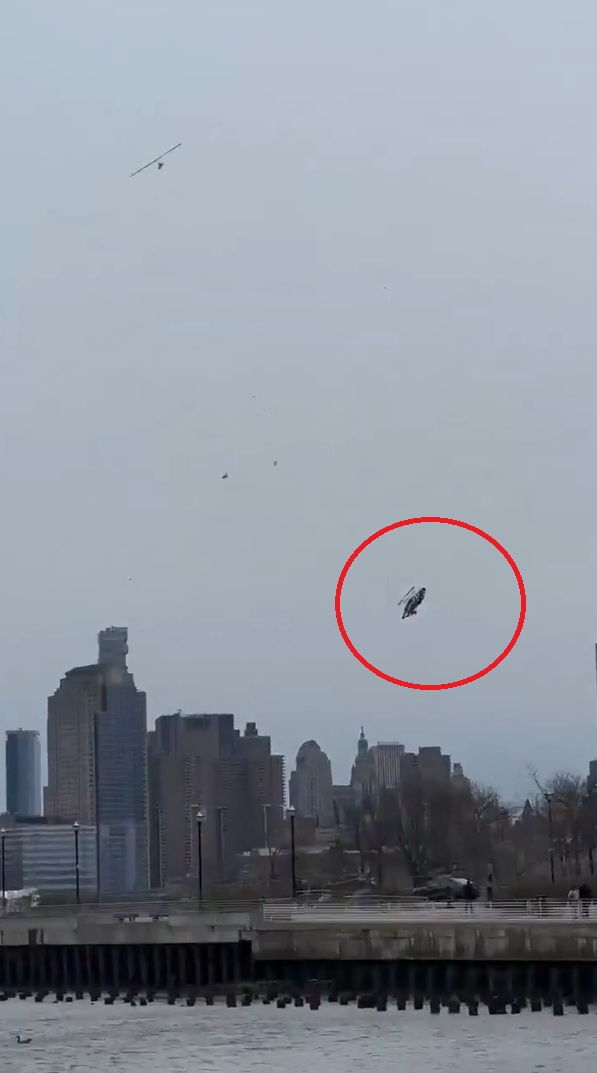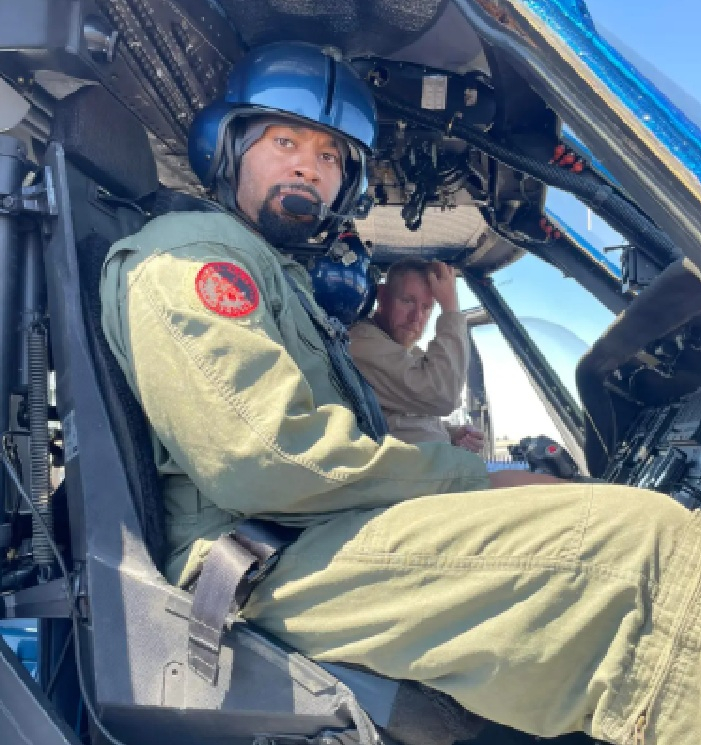The tourist helicopter that crashed into the Hudson River last month, killing a family of five and the pilot, was making "loud bangs" before it broke into three parts, according to a preliminary report released by the National Transportation Safety Board on Wednesday.
The NTSB report revealed that witnesses heard explosive sounds coming from the New York Helicopter Tours aircraft while it was flying above the Hudson River just a few moments before the fatal crash on April 10. Right after the explosive sounds were heard, security footage captured the moment the helicopter lost control before breaking into three main components: the fuselage, the main rotor, and the tail boom.
Big Bang and an Explosion

The Bell 206 helicopter crashed into the Hudson River only 17 minutes after taking off. The NTSB has not yet determined the exact cause of the deadly crash and said that the investigation is still ongoing.
Agustín Escobar, a Siemens executive from Spain, along with his wife Merce Camprubi Montal and their three children—ages four, eight, and ten—were killed when the sightseeing helicopter crashed into the Hudson River.

The family was visiting New York on vacation to celebrate one of their daughters' birthdays.
Dramatic footage showed a rotor blade falling into the water. Aviation specialists believe the helicopter likely crashed after the main rotor blades detached from it and struck the tail section.
The NTSB's preliminary report also revealed that the pilot, Sean Johnson, had recently returned from a 10-day vacation.

Johnson followed a 10-days-on, 10-days-off work schedule, a standard procedure followed by pilots. He had over 790 hours of flying experience, and the fatal flight was his eighth of the day. The previous seven flights in the same helicopter had all gone smoothly.
During the flight, Johnson was wearing smart sunglasses equipped with video and audio recording features, but the device was never found at the crash scene.
A Lot Still Remains Unanswered
Pieces of the helicopter were found as far away as Hoboken, New Jersey, including on a rooftop near a transit facility, according to the report. Michael Roth, 71, the owner of New York Helicopter—the company that operated the tour—claimed the helicopter was running low on fuel before it went down.

"He [the pilot] called in that he was landing and that he needed fuel, and it should have taken him about three minutes to arrive, but 20 minutes later, he didn't arrive," Roth told The Telegraph.
Roth said that he was devastated by the crash and concurred with other aviation experts who believe the footage indicates that the main rotor blades had broken off from the helicopter. "The only thing I know by watching a video of the helicopter falling down, that the main rotor blades weren't on the helicopter," he told the New York Post.

"And I haven't seen anything like that in my 30 years being in business, in the helicopter business. The only thing I could guess – I got no clue – is that it either had a bird strike or the main rotor blades failed. I have no clue. I don't know."
At the time of the crash, it was cloudy, and winds were ranging from 10 to 15 mph, with gusts reaching up to 25 mph.
Although the skies were overcast due to an approaching weather system bringing light rain later in the day, visibility at ground level was clear at around 10 miles. The water temperature was around 50 degrees Fahrenheit.









